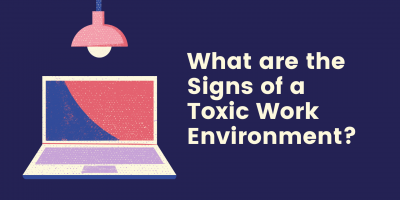
What are the Signs of a Toxic Work Environment?
Deciding to stay or leave a toxic work environment isn’t always straightforward. However, recognizing the signs is the first step toward resolution.

The global pandemic shed light on remote work and made it clear that companies need to invest in technologies that make working remotely possible and manageable. These remote work statistics tell us that this new way of working is one-way people will move forward in the workplace.
71% of Spanish employees sometimes use their smartphones for remote working, compared to 38% in the U.K. and 27% in Germany. (Vodafone Global Survey*, 2016)
Only 8% of U.K. companies surveyed would be concerned about employees not working as hard due to flexible working arrangements, compared to 33% in Hong Kong. (Vodafone Global Survey, 2016)

According to one of the most extensive global surveys of its kind, conducted with 8,000 employers and employees across three continents, 75% of companies have now implemented flexible working policies allowing employees to vary their working hours and use the latest technologies to work from home or on the move. (Vodafone Global Survey, 2016)
Currently, 61% of respondents use their home broadband subscription to access business apps, while 24% utilize a mobile data connection through their smartphone, tablet, or laptop with a broadband adapter. (Vodafone Global Survey, 2016)
Employees would not work as hard if they were permitted to use flexible working patterns and technology, according to 22% of respondents. (Vodafone Global Survey, 2016)

According to 55% of firms that do not have remote work in place, employee morale would increase if flexible working rules were implemented. (Vodafone Global Survey, 2016)
According to 20% of respondents, their organization has not yet established a flexible working policy. 33% felt it would be inappropriate for their organization’s culture. 30% were concerned about tension between employees who worked flexibly and those who did not. 25% thought that work would be unevenly allocated across flexible and non-flexible employee groups. (Vodafone Global Survey, 2016)

Remote work is a popular advantage for prospective employees. As we can see from the remote work statistics, the company becomes a desirable place for future candidates when remote work is an option.
* We’re using an archived version of the page as the source.
Browse our curated list of vendors to find the best solution for your needs.
Subscribe to our newsletter for the latest trends, expert tips, and workplace insights!

Deciding to stay or leave a toxic work environment isn’t always straightforward. However, recognizing the signs is the first step toward resolution.

Beyond holiday festivities and annual performances, here’s why December’s focus should be about celebrating human rights in the workplace.

Value-based connections, hybrid events, expansion of AI, and the metaverse. In the ever-expanding networking realm, here’s what to look out for in 2025.

Toxic work culture: It’s not just bad coffee and gossip. It’s a silent killer of morale and productivity. Here’s the antidote.
Used by most of the top employee benefits consultants in the US, Shortlister is where you can find, research and select HR and benefits vendors for your clients.
Shortlister helps you reach your ideal prospects. Claim your free account to control your message and receive employer, consultant and health plan leads.